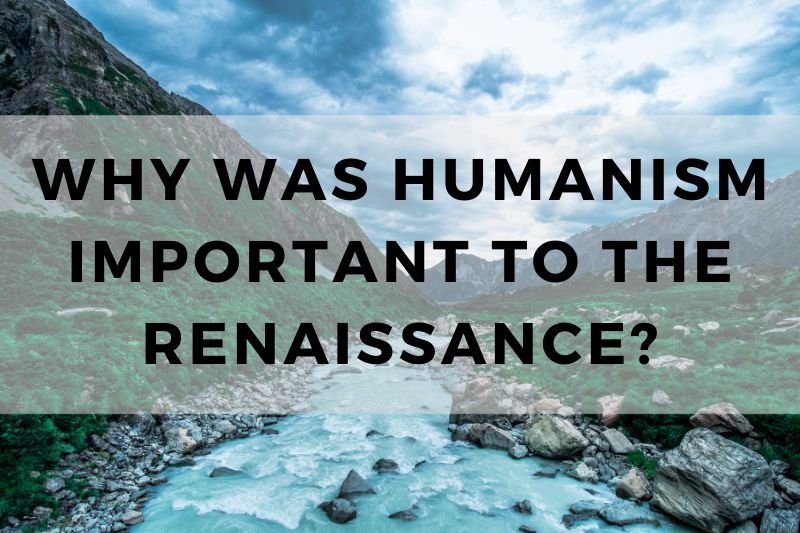
The Renaissance was a turning point in history. It revived knowledge, reshaped art, and transformed society. At its core was humanism, a philosophy that emphasized human potential and achievement. Humanism challenged medieval traditions and placed reason, education, and individual worth at the center of thought.
It encouraged scholars to study classical texts and apply their lessons to contemporary life. This shift fueled advancements in science, politics, and culture. Without humanism, the Renaissance would not have reached its full impact. Understanding why humanism was important to the Renaissance reveals its lasting influence on modern ideas and institutions.
Key Reasons Why Humanism Was Important to the Renaissance
#1. Revival of Classical Knowledge
Humanism sparked a renewed interest in the wisdom of ancient Greece and Rome. Scholars actively sought original manuscripts, moving away from medieval interpretations. They studied philosophy, literature, and history to rediscover ideas that had been lost or distorted over centuries. This revival shifted focus from religious dogma to secular knowledge, encouraging a more well-rounded understanding of the world.
By engaging with classical texts, Renaissance thinkers developed a more critical approach to learning. They questioned long-standing assumptions and applied reason to solve problems. This mindset laid the foundation for intellectual progress, influencing education, science, and the arts.
A prime example is Petrarch, often called the “Father of Humanism.” He devoted his life to collecting and studying ancient texts, inspiring a wave of scholars to do the same. His efforts helped recover works of Cicero and other classical writers, fueling the intellectual movement that defined the Renaissance.
#2. Emphasis on Individualism
Humanism placed the individual at the center of thought. It encouraged self-expression, personal growth, and independent thinking. Unlike the medieval focus on collective faith and rigid societal roles, humanism celebrated human potential and creativity. People were no longer seen merely as part of a larger religious order but as capable individuals with unique talents and ambitions.
This shift transformed how people saw themselves and their abilities. Artists, writers, and scientists began pursuing personal achievement, not just religious service. The idea that individuals could shape their own destinies became a defining feature of the Renaissance.
Leonardo da Vinci embodied this humanist spirit. A painter, inventor, and scientist, he explored a vast range of disciplines, demonstrating the power of individual genius. His curiosity and creativity made him a Renaissance icon, proving that one person could make a lasting impact on the world.
#3. Promotion of Education and Learning
Humanists believed education was the key to progress. They reformed schools, shifting the focus from purely religious teachings to a broader curriculum that included grammar, rhetoric, poetry, history, and moral philosophy. This approach prepared students for a well-rounded life, emphasizing intellectual and ethical development.
One of the biggest breakthroughs in spreading humanist ideas came with the invention of the printing press by Johannes Gutenberg. Books became more accessible, allowing more people to engage in learning and critical thinking. Education was no longer reserved for the elite—it became a pathway to knowledge for a much wider audience.
Desiderius Erasmus, a leading Dutch humanist, championed the power of education. His book The Praise of Folly criticized ignorance and corruption, urging people to value knowledge and wisdom. His writings influenced scholars and reformers across Europe, reinforcing the belief that education could shape a better society.
#4. Inspiration for Artistic Innovation
Humanism transformed the arts by shifting the focus from religious symbolism to human experience and expression. Artists moved away from rigid, one-dimensional figures and instead aimed for realism, depth, and emotion. They studied anatomy, light, and movement to create lifelike representations of people and the world around them.
This change made art more personal and relatable. Artists wanted to capture beauty, individuality, and human emotion, producing some of the most famous masterpieces in history. Their works reflected the Renaissance belief in human dignity and potential.
Michelangelo’s David is a perfect example. The statue celebrates the strength and beauty of the human form, embodying humanist ideals. Raphael’s School of Athens also reflects this philosophy, portraying great thinkers of the past in a grand, intellectual gathering. These artworks showed that art was no longer just about religious devotion—it was about humanity itself.
#5. Revolution in Philosophy and Thought
Before the Renaissance, philosophy was largely tied to religious doctrine. Humanism introduced a new way of thinking—one that focused on reason, ethics, and human potential. Scholars began questioning long-held beliefs and exploring secular ideas, paving the way for modern philosophy and political thought.
This intellectual shift encouraged debate and independent reasoning. Instead of blindly accepting religious authority, people were urged to seek truth through observation and critical thinking. This movement laid the foundation for new political, ethical, and scientific ideas that shaped the modern world.
Niccolò Machiavelli’s The Prince is a prime example of this shift. Unlike medieval texts that justified leadership through divine right, Machiavelli analyzed power and politics from a realistic, strategic perspective. His work shaped political thought for centuries, demonstrating how humanist ideas could challenge tradition and offer new ways of understanding governance.
#6. Development of Modern Science
Humanism played a key role in shifting scientific thought from religious explanations to observation and experimentation. Scholars began to study the natural world through reason and evidence rather than relying solely on theological interpretations. This approach led to groundbreaking discoveries that challenged medieval beliefs and laid the foundation for modern science.
By emphasizing critical thinking and questioning authority, humanism encouraged scientists to develop new theories. Figures like Copernicus and Galileo revolutionized astronomy, proving that the Earth was not the center of the universe. Their findings, though controversial, marked the beginning of a scientific revolution driven by inquiry rather than doctrine.
One of the most famous examples is Leonardo da Vinci’s scientific studies. He dissected human bodies to understand anatomy, sketched early designs for machines, and explored principles of physics. His notebooks reveal a mind that was deeply influenced by humanist ideals—curious, analytical, and committed to uncovering truth through observation.
#7. Shift in Political and Social Ideas
Humanism reshaped political thought by challenging the idea that rulers governed by divine right alone. Instead, it emphasized civic responsibility, governance based on reason, and the importance of human agency in shaping society. This shift influenced political systems across Europe and laid the groundwork for more secular governments.
Rather than viewing rulers as unquestionable figures chosen by God, humanist thinkers examined leadership critically. They debated what made a good ruler and how governments should serve their people. This led to new political theories that valued diplomacy, strategy, and public welfare over religious justification.
Machiavelli’s The Prince is a prime example. Unlike medieval texts that framed politics in moral or religious terms, Machiavelli analyzed power realistically. He argued that rulers must be pragmatic and adaptable, influencing political thought for centuries. His work remains relevant today, showing the lasting impact of humanist ideas on governance.
#8. Humanism as a Bridge Between the Medieval and Modern Eras
The Renaissance was a turning point between the medieval world and the modern age. Humanism acted as a bridge, bringing forward ancient wisdom while shaping new ways of thinking. It connected the past with the future, blending classical knowledge with innovative ideas.
During the Middle Ages, religious institutions controlled most aspects of life. Humanism helped shift the focus toward secular knowledge, personal achievement, and intellectual freedom. This change encouraged people to explore science, philosophy, and the arts without fear of contradicting religious doctrine.
For instance, humanist scholars like Erasmus and Thomas More used classical ideas to critique contemporary society. Their writings questioned corruption, promoted education, and called for reforms, proving that humanism was not just about preserving old knowledge—it was about using it to create a better future.
#9. Cultural Flourishing
The Renaissance saw an explosion of creativity in literature, music, and theater, largely driven by humanist ideals. Writers and artists moved beyond religious themes to explore human emotions, nature, and individual experiences. This shift made culture more diverse, relatable, and intellectually stimulating.
Humanist literature embraced realism and storytelling that reflected everyday life. Writers explored personal struggles, moral dilemmas, and the complexity of human nature. Poetry, drama, and prose flourished as authors broke free from rigid medieval traditions.
A perfect example is William Shakespeare. His plays explored themes of ambition, love, power, and human frailty in a way that resonated across time. His deep understanding of human nature reflects the Renaissance spirit—one that values individual experience and emotional depth.
#10. Encouragement of Secularism
Humanism did not reject religion, but it encouraged a more balanced approach between faith and reason. It promoted the idea that people could engage with the world intellectually and culturally without solely relying on religious doctrine. This shift allowed for greater freedom of thought and expression.
Secularism gave rise to advancements in art, science, and politics that were not strictly tied to religious institutions. It also allowed for the growth of independent universities, where scholars could study a wide range of subjects without interference from the Church.
One clear example is the patronage of the Medici family in Florence. While they were devout Catholics, they also supported artists, scientists, and philosophers whose works were not solely religious. This balance between faith and secular knowledge helped shape the intellectual and artistic achievements of the Renaissance.
Conclusion
Humanism was the driving force behind the Renaissance. It revived classical knowledge, emphasized individual potential, and reshaped education. It inspired artistic innovation, transformed philosophy, and laid the foundation for modern science. Political thought evolved, cultural expression flourished, and secularism gained ground.
Without humanism, the Renaissance would not have had the same impact. It encouraged people to think critically, seek knowledge, and challenge outdated beliefs. Its influence extended beyond the Renaissance, shaping the Enlightenment and modern society. The principles of humanism—reason, curiosity, and human potential—continue to shape the way we understand the world today.
